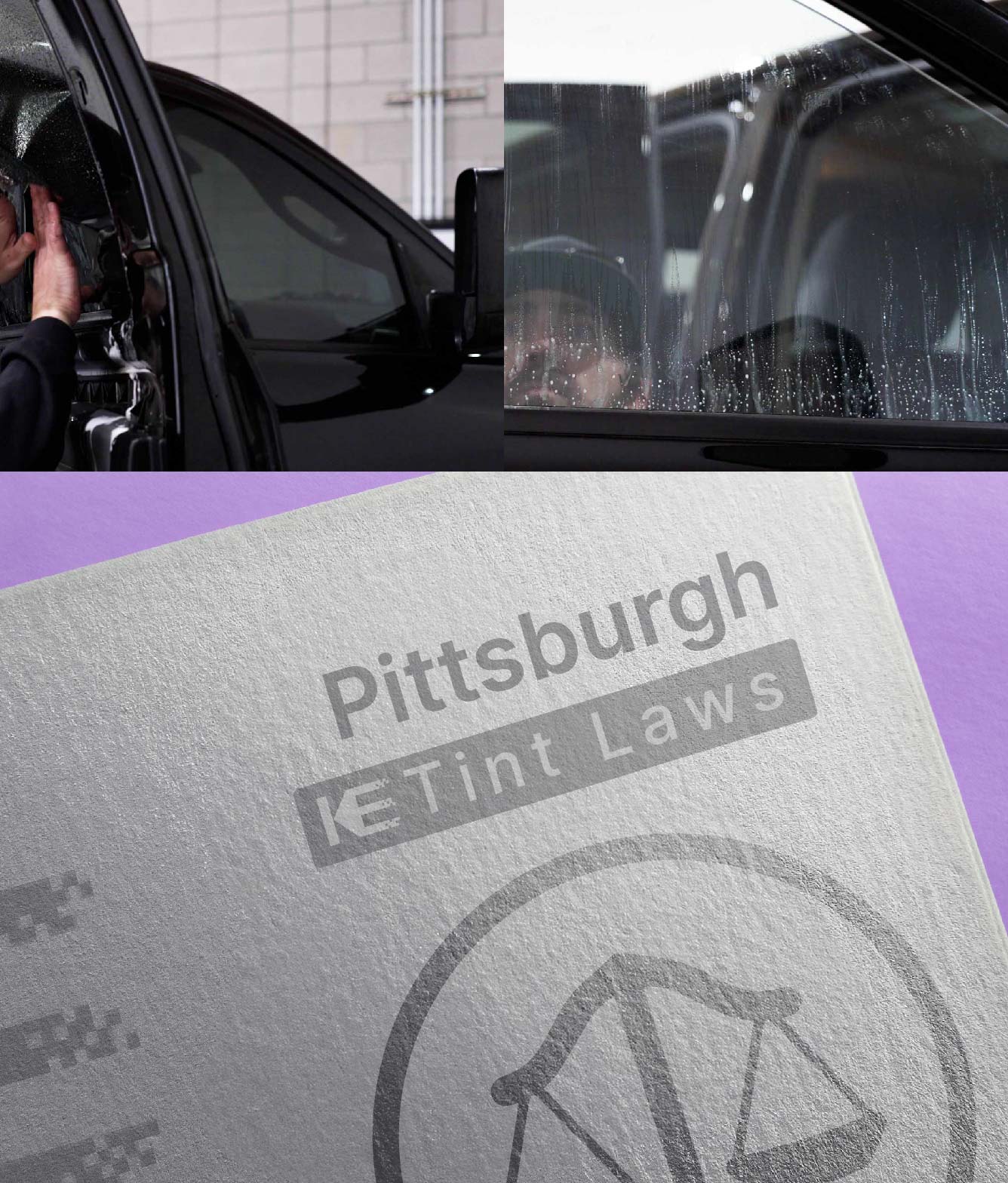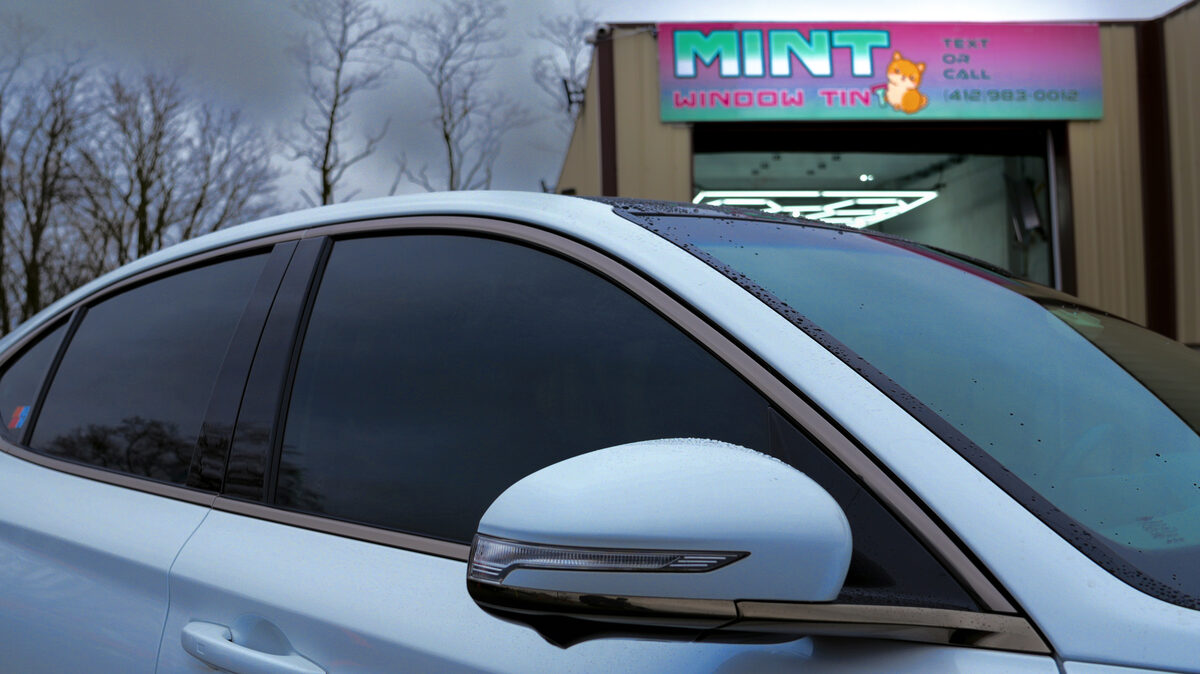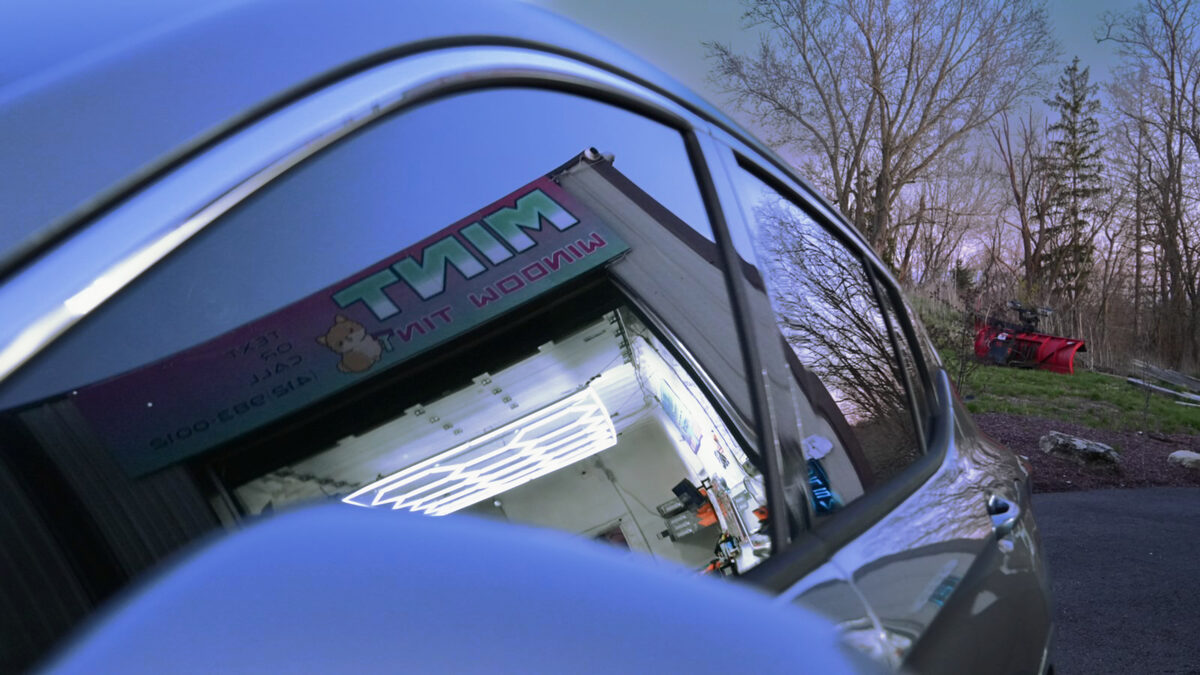Car Glass Tinting for SUVs and Trucks: Is It Different From Sedans?
A Comprehensive Overview to Understanding Automobile Home Window Color and Its Advantages
Automobile home window tinting offers more than simply a visual purpose for automobiles. It uses different types, each with distinct attributes and benefits. Comprehending these choices, together with legal laws and upkeep pointers, is important for any vehicle proprietor. The benefits might greatly enhance driving convenience and automobile durability. As one checks out the subtleties of home window tinting, the question arises: what type of color is ideal matched for individual requirements?
Understanding Vehicle Window Color: What It Is and Just how It Functions
Automobile home window tint offers as a protective obstacle that enhances car aesthetics while offering useful advantages. This thin movie is used to the indoor surface area of cars and truck windows, decreasing glare and blocking hazardous ultraviolet (UV) rays from the sunlight. By filtering system sunshine, car window tint helps to regulate the interior temperature level of the vehicle, causing increased convenience for passengers and reduced dependence on air conditioning.Additionally, it secures the lorry's interior from fading, preserving both furniture and dashboard materials. The tint can also enhance personal privacy, making it more challenging for outsiders to see inside the car. Moreover, certain kinds of window tint can raise safety and security; in case of an accident, the film helps hold destroyed glass with each other, minimizing the threat of injury from flying fragments. Overall, auto window tint serves both aesthetic and practical purposes, making it a popular option amongst automobile owners.
Types of Home Window Color: A Review of Options
When taking into consideration window tint alternatives, numerous types are readily available, each with distinct qualities. Dyed, metalized, and ceramic home window tints use varying levels of heat denial, UV defense, and aesthetic charm. Understanding these differences can aid lorry owners make notified options based upon their choices and requirements.
Colored Home Window Color
Colored window tint represents a prominent selection among automobile owners looking for a efficient and cost effective way to improve their vehicle's aesthetics and privacy. This sort of tint is produced by putting a layer of dye in between a sticky layer and a safety finish, causing a darkened look that minimizes glare and boosts aesthetic convenience. While dyed window color successfully obstructs unsafe UV rays, it may not provide the exact same level of warm rejection as various other color types. Furthermore, its shade can discolor gradually, possibly diminishing its performance. Despite these disadvantages, colored window tint remains favored for its cost-effectiveness and capability to give a sleek, elegant look to numerous car versions.
Metalized Window Tint
Metalized home window tint supplies an equilibrium of design and performance, making it a preferred choice amongst automobile owners. This kind of tint includes metal particles within the film, improving both aesthetic charm and heat rejection. The reflective quality of metalized color helps to minimize glow and boost privacy, while also providing UV defense, which safeguards the lorry's inside. Furthermore, metalized home window color can reinforce window stamina, potentially protecting against ruining throughout accidents. However, it is very important to note that the metallic elements can disrupt digital signals, such as GPS and cell phone function. Generally, metalized home window tint gives a reliable remedy for those seeking a combination of appearance, sunlight, and resilience security for their lorries.
Ceramic Window Tint
Ceramic window color represents an innovative option in the range of vehicle window movies, supplying distinctive benefits over traditional tints. Unlike colored or metalized movies, ceramic tints use innovative ceramic particles, which properly reject warm and UV rays without compromising presence. This modern technology ensures that vehicles stay cooler, lowering dependence on a/c and improving fuel effectiveness. Furthermore, ceramic home window tints are much less likely to conflict with digital devices, such as general practitioner or mobile signals, making them a practical choice for modern-day automobiles. Their durability and scrape resistance add to a longer life-span compared to other types of tints. Overall, ceramic home window tint gives remarkable performance, convenience, and defense, making it a recommended choice for critical automobile proprietors.
Advantages of Vehicle Window Color: Beyond Visual Appeals
While lots of individuals associate car home window color with boosted style, its benefits expand much beyond plain appearances. One significant advantage is warmth reduction; window tint can obstruct as much as 99% of unsafe UV rays, keeping the interior cooler and protecting upholstery from fading. This not only boosts comfort throughout heat yet additionally minimizes dependence on air conditioning, causing improved gas efficiency.In enhancement, car window color supplies an included layer of personal privacy and safety. Tinted windows make it difficult for outsiders to see inside the automobile, which can discourage burglary and shield belongings. Furthermore, numerous colors strengthen the glass, decreasing the chance of smashing in case of a crash, consequently improving safety.In addition to these functional advantages, auto window tint can likewise contribute to glare decrease, improving exposure for guests and chauffeurs alike. This multifaceted approach to convenience and safety makes home window tint a valuable investment for automobile owners.
Legal Factors To Consider: Tinting Laws by State
Before dedicating to automobile home window tint, car proprietors should navigate a complex landscape of tinting laws that vary by state. Each state has particular laws controling the acceptable levels of tint darkness and reflectivity for different windows, including windscreens, front side home windows, and back windows. These guidelines commonly consist of noticeable light transmission (VLT) percentages, which determine just how much light can travel through the tinted glass.Some states allow darker colors on rear windows while restricting front side and windshield tints for security factors. In addition, certain states might require a certificate from the supplier to verify conformity with tinting regulations. Violating these regulations can lead to fines, required elimination of the tint, or both. Consequently, it is necessary for lorry owners to research their state's regulations completely look at these guys to guarantee lawful conformity prior to setting up window color. This persistance can save time and money in the future.
Picking the Right Color: Elements to Consider
When selecting the appropriate window tint for a lorry, several critical aspects enter play. Color darkness degrees, UV defense scores, and compliance with legal regulations are essential factors to consider to assure both aesthetics and capability - Car Glass Tinting. Reviewing these elements will aid people make an enlightened choice that satisfies their needs and complies with neighborhood legislations
Tint Darkness Degrees
Choosing the suitable color darkness degree is vital for achieving the preferred equilibrium in between visual appeals and performance in vehicle home window tinting. Different states have differing lawful policies relating to color darkness, which can affect the choice. Generally, colors are gauged in portions, with lower percents suggesting darker shades. Darker colors use raised personal privacy and a smooth look yet can lower presence, especially during the night. Conversely, lighter tints maintain a more open feel, making sure adequate presence while still supplying some heat and glow reduction. When making a decision, individuals should consider their driving practices, neighborhood regulations, and personal choices. Ultimately, the right color darkness degree improves the vehicle's appearance while guaranteeing safety and security and compliance with lawful requirements.
UV Protection Score
Color darkness levels play a substantial role in the total effectiveness of vehicle window tinting, however an additional important aspect to review is the UV security ranking of the chosen color. This score suggests the portion of damaging ultraviolet rays that the color can block. Top notch colors frequently supply 99% or more UV security, guarding guests and the vehicle's interior from sun damage. Extended direct exposure to UV rays can bring about skin troubles and fading of upholstery, making a high UV protection score essential for health and durability. When picking window color, customers need to prioritize this score together with darkness degrees to ensure optimum comfort and safety while driving. Comprehending these aspects help in making a notified choice when purchasing automobile window tinting.
Lawful Regulations Compliance
Recognizing local legal policies is essential for any person considering automobile home window tinting. Each state or region has details regulations governing the allowable levels of color darkness and reflectivity for different home windows. These guidelines frequently specify the noticeable light transmission portion, identifying just how much light can travel through the colored glass. Non-compliance can result in penalties, necessary elimination of the color, or issues during lorry inspections. Furthermore, some areas may have restrictions on making use of specific tinting materials, calling for customers to select products that fulfill security requirements. Consequently, it is vital for vehicle proprietors to investigate their regional legislations extensively prior to picking home window color to guarantee conformity and avoid possible legal problems.
Installment Process: do it yourself vs. Professional Solutions
How does one make a decision between a do it yourself setup and working with professional services for vehicle window tinting? The option usually depends upon spending plan, experience, and preferred results. A DIY method can be affordable, allowing people to save money on labor costs. It needs a particular degree of skill and understanding concerning the tinting procedure. Those who are precise and individual may find success with DIY sets offered in the market.Conversely, specialist solutions provide Get the facts experience and high-grade materials, making sure a flawless coating. Professionals frequently assure their work, giving satisfaction versus prospective concerns such as gurgling or peeling off. Additionally, they are familiar with regional laws pertaining to tinting, which can be intricate for the ordinary auto owner.Ultimately, the choice reflects a balance in between price, individual ability, and the anticipated quality of the tinting job. Each option has its benefits, and the ideal option relies on private circumstances and preferences.
Maintenance Tips: Maintaining Your Color in Top Condition
Maintaining the appearance and functionality of home window tint requires normal attention and care, specifically in differing weather problems. To maintain the tint, it is necessary to stay clear of utilizing abrasive cleansing materials, which can scratch or damage the movie. Car Glass Tinting. Instead, soft microfiber towels and gentle, ammonia-free cleaners should be made use of for cleaning the colored surfaces.Furthermore, it is recommended to wait a minimum of one month after installation prior to cleaning the home windows to allow the tint to fully adhere. Car park in shaded locations or making use of sunshades can help in reducing the fading results of UV rays and lengthen the color's life-span. Normal examinations for bubbles, peeling off, or discoloration are suggested, as very early discovery can assist in repair work. Ultimately, preventing severe temperature changes, such as pressing warm windows in winter, will certainly help preserve the color's integrity and look over time
Regularly Asked Questions

How Much Time Does Window Tint Normally Last on a Lorry?
Home window color typically lasts in between 5 to 10 years, depending upon factors such as high quality, application, and environmental problems. Normal maintenance and appropriate care can extend its lifespan, ensuring ideal efficiency and look gradually.
Can Window Tinting Damages My Automobile's Original Glass?
Home window tinting, when applied properly, does not harm an automobile's initial glass. However, incorrect installment or low-quality materials might lead to issues like gurgling or peeling off, possibly impacting the glass's stability in time.
Is Home Window Tinting Safe for All Kinds Of Autos?

Will Window Tinting Gap My Auto Warranty?
The inquiry of whether home window tinting spaces an automobile service warranty frequently depends upon the maker's policies. Normally, if the color does not damage the car, warranties typically stay intact. However, consulting the supplier is recommended.

Can I Eliminate Window Color Myself if Needed?
Removing home window color oneself is possible, however it requires cautious attention to avoid harming the glass. Individuals must make use of proper devices and strategies to assure an effective removal without leaving adhesive deposit or scrapes behind. While dyed home window color successfully blocks dangerous UV rays, it may not use the very same level of warm rejection as other color types. Ceramic window color represents an innovative option in the spectrum of auto window films, offering distinctive advantages over typical colors. Prior to dedicating to automobile home window tint, lorry owners have to browse a complex landscape of tinting Get More Info guidelines that differ by state. These laws frequently consist of noticeable light transmission (VLT) percents, which determine how much light can pass through the tinted glass.Some states allow darker colors on back home windows while limiting front side and windscreen colors for safety reasons. Color darkness levels play a significant role in the overall performance of automobile window tinting, however one more essential element to evaluate is the UV defense score of the chosen color.